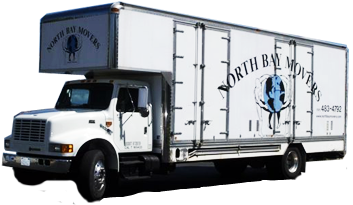The Insurance Clause Movers Won’t Discuss — And How We Handle It Differently
Posted Sep 12th, 2025
Introduction
Most people sign a moving contract without reading the insurance clause. That clause can decide what happens if something breaks, goes missing, or gets delayed. Many movers call it “insurance,” but it often isn’t. It’s a limited promise with lots of fine print.
In this guide, we explain what that clause really means, the parts movers don’t highlight, and how we handle coverage in a clear, fair, and simple way. By the end, you’ll know what to look for and how to protect your things the right way.
What “Moving Insurance” Usually Is (and Isn’t)
In most contracts, the “insurance” is actually valuation. Valuation is the mover’s limited liability for your items, not a full insurance policy.
The two common options:
- Released Value Protection (basic): Usually included at no extra charge but pays about $0.60 per pound per item. If a 70-lb TV is damaged, the payout could be $42.
- Full Value Protection (upgraded): Costs more but promises repair, replacement, or cash for the current market value (often with a deductible and maximum limits).
Key point: Valuation is not the same as a third-party insurance policy. It’s a contract promise with rules and limits.
The Clause Movers Won’t Discuss
Here are the parts often buried in fine print:
- Per-pound limits
Low per-pound rates can slash payouts on light, high-value items like laptops, art, or jewelry. - Exclusions for “owner-packed” boxes
If you packed the box yourself, many movers won’t cover inside-the-box damage unless the box shows clear external damage. - High-value item declarations
Items over a set value (for example, $100+ per pound) often must be declared in writing before the move or they’re not fully covered. - Deductibles and caps
Some plans have deductibles or a total job cap. You could file a claim and still get little back. - Acts of God and “inherent vice”
Damage from storms, floods, or flaws inside an item can be excluded. - Short claim deadlines
You may have only a small window (sometimes days) to file. Miss it and coverage can vanish. - Subcontractors and brokers
If your mover is a broker or uses subcontractors, coverage and accountability can get confusing. - Arbitration only
Some contracts force you into private arbitration for disputes, which can limit your options.
Red Flags to Watch For in Any Moving Contract
- Vague wording like “industry standard” without specifics.
- No clear choice between Released Value and Full Value.
- No written process for claims and timelines.
- No Certificate of Insurance (COI) available for buildings that require it.
- No guidance on high-value item forms or custom crating.
How We Handle It Differently
We believe coverage should be plain, fair, and honest. Here’s our approach:
- Plain-Language Coverage Sheet
Before booking, we share a one-page, easy-to-read summary of options, costs, limits, deductibles, and examples. - Clear Choices by Default
We explain Released Value and Full Value Protection side by side. You choose what fits your budget and risk. No surprises. - High-Value Item Protection
We give you a simple high-value form and help you list art, antiques, instruments, and electronics. We recommend custom crating where needed. - Building-Ready COI
We issue a Certificate of Insurance on request, sent directly to your building or property manager. - Photo-First Inventory
We document condition with photos and a digital inventory before loading. It speeds up claims and adds transparency. - Trained Crew, Better Packing
Our team is trained in proper wrapping, padding, and crating. We use quality materials and room-by-room labeling to reduce risk. - Simple, Timely Claims
If something goes wrong, you get a clear online claim form, a direct contact, and regular updates until resolution. - No Hidden Fine Print
Deductibles, caps, and exclusions are disclosed in writing—up front.
What to Ask Any Mover About Insurance and Valuation
- Do you offer both Released Value and Full Value Protection?
- What are the exact limits, deductibles, and caps?
- How do you handle owner-packed boxes and high-value items?
- Can you provide a COI to my building?
- What is the claim filing window and how long do claims take?
- Do you use subcontractors, and are they covered the same way?
Our Claims Promise
- You get a single point of contact for any claim.
- We provide the photos, inventory, and paperwork we took on move day.
- We target fast, fair resolutions and keep you updated at each step.
Quick Checklist Before You Sign
- Read the coverage summary and choose your plan.
- Declare high-value items in writing.
- Decide who’s packing what and follow the packing checklist.
- Request a COI if your building needs one.
- Save your claim deadlines and contact info.
Conclusion
The insurance clause can protect you—or leave you exposed. Many movers don’t explain the limits, deadlines, and exclusions. We do. We lay out your options in plain English, help you safeguard high-value items, and make claims simple if you ever need them.
Want a move with clear coverage and zero surprises?
Get a free, no-pressure quote today. We’ll share our coverage sheet up front and help you pick the protection that fits your needs and budget.


